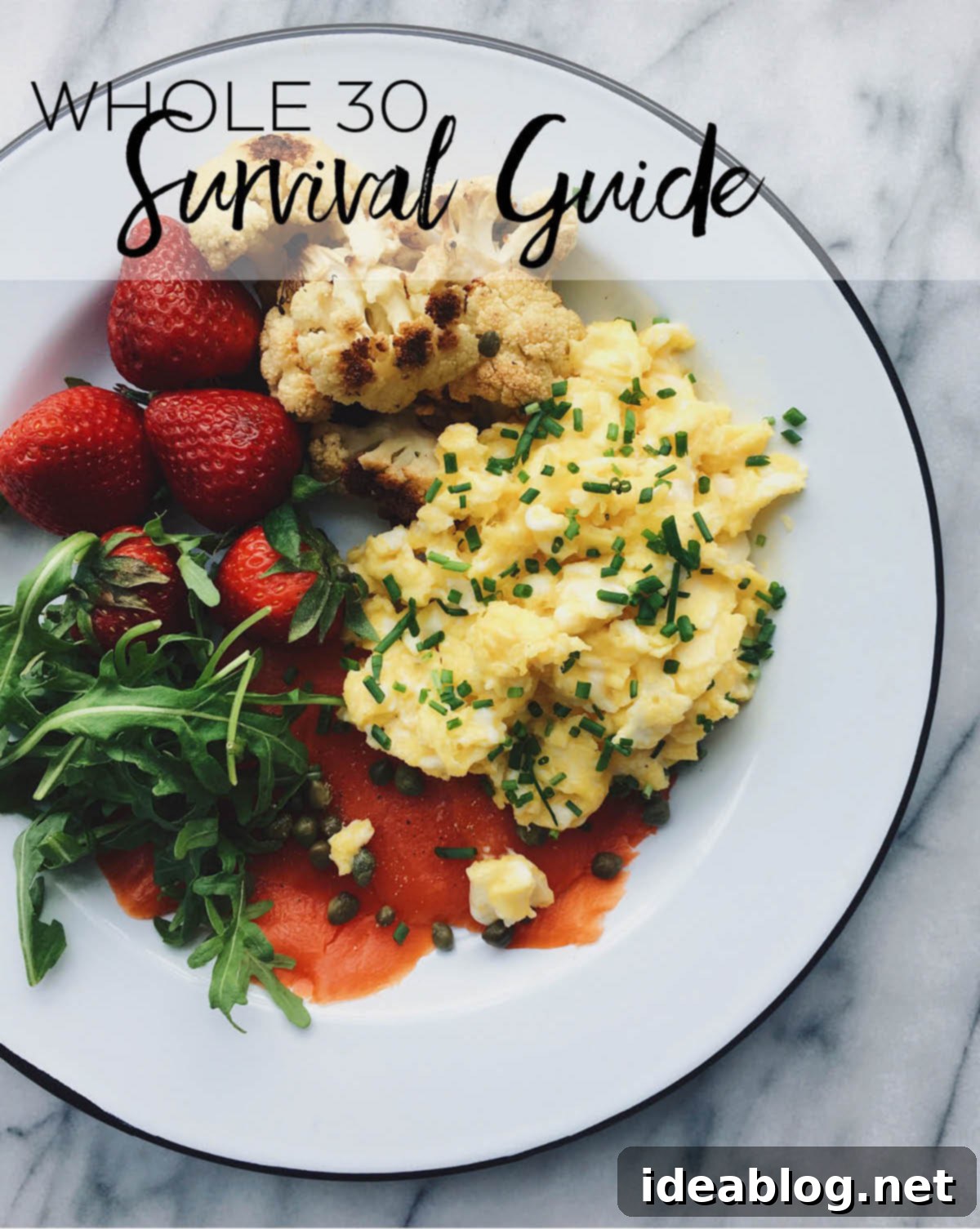Mastering Your Whole30 Journey: A Comprehensive Guide to Resetting Food Habits and Embracing Wellness
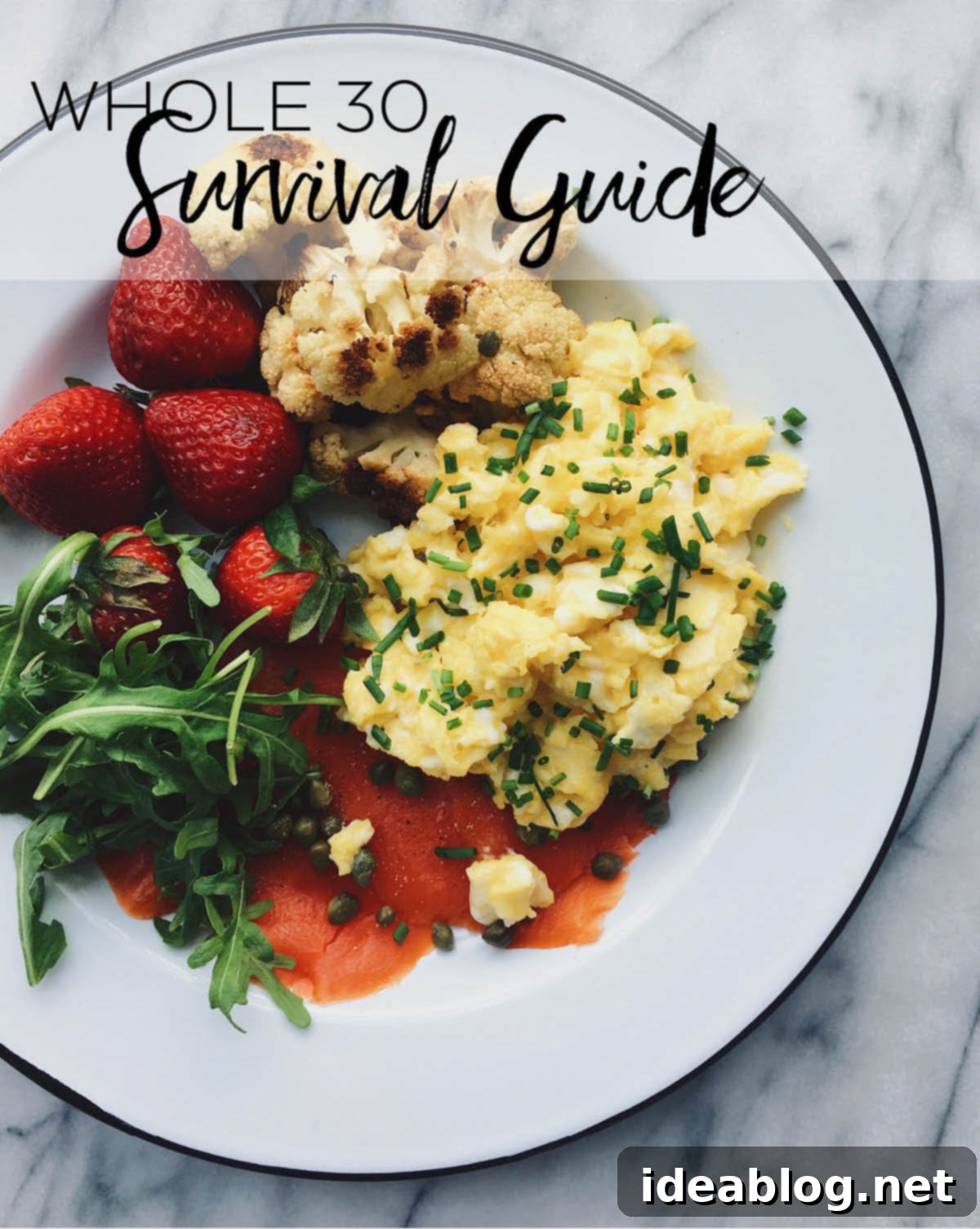
Day One Breakfast: Fueling the Start of a New Routine
Embarking on the Whole30 program is a significant commitment, a 30-day challenge designed to reset your relationship with food, understand how different foods impact your body, and ultimately achieve what the program calls “food freedom.” As I navigate my fourth full day on this transformative journey, I wanted to share a deeper dive into my motivations, initial experiences, and the practicalities of adhering to this popular diet. A few weeks ago, I hinted at taking on the Whole30 challenge for the upcoming month, and since then, many of you have expressed keen interest in the ‘why’ and ‘how’ behind it. This post serves both as a personal accountability record – after all, announcing endeavors on the internet is an excellent motivator – and as a response to your curiosity about my Whole30 journey to healthier eating.
Understanding the Whole30 Philosophy: Beyond Just “Cutting Foods”
Initially, I admit, I approached popular food programs with a healthy dose of skepticism. As someone who questions deeply, the idea of eliminating entire food groups without a clear, scientific rationale always gave me pause. Of course, legitimate health intolerances or allergies are a different story, and it’s crucial to remember that every individual body is unique. What works for one person may not work for another, and my intention here is never to shame or dictate anyone’s dietary choices. This journey is purely my own experience, shared with those who are interested in exploring similar paths to wellness and dietary awareness.
Food, for me, has always been more than just fuel or nutrients; it’s profoundly emotional. It brings joy, comfort, and enhances life’s experiences. I openly adore dairy, pasta, bread, grains, and certainly enjoy the occasional baked treat. My professional life, in fact, revolves around food. So, when I first encountered the concept of Whole30, which involves temporarily cutting out many of these beloved items, my immediate reaction was a resounding, “You can’t eat what?!” The restrictions seemed daunting, almost antithetical to my culinary passions and established eating habits.
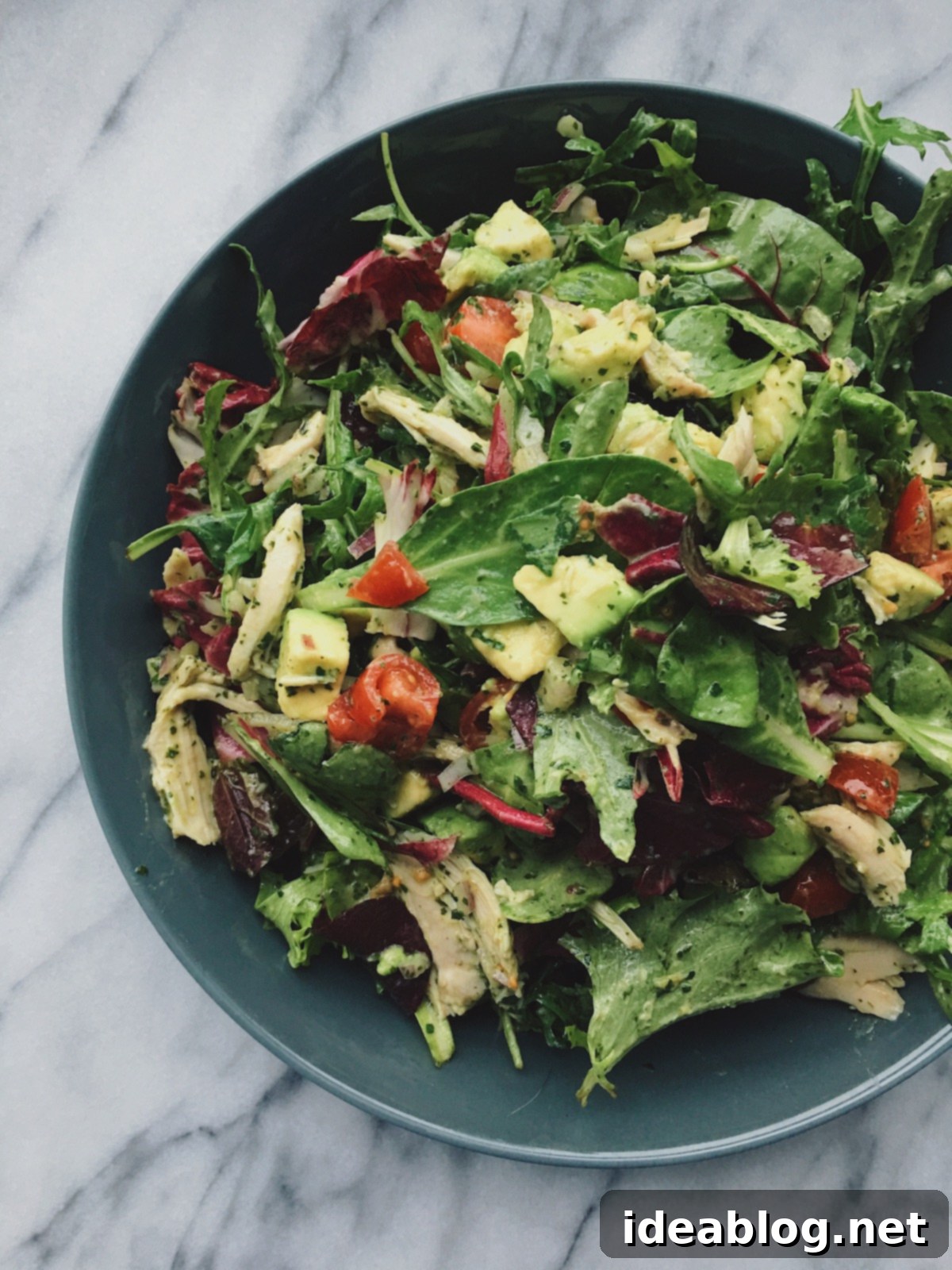
Enjoying a Whole30 Compliant Guacamole Green Salad (without the chips!)
Despite my initial reservations, the consistent positive feedback surrounding Whole30 began to pique my interest. I decided to invest in the book It Starts with Food. Reading it was a revelation. The book’s principles, particularly those addressing cravings and what they term “foods-with-no-brakes” – those items you just can’t seem to stop eating once you start – resonated deeply with my personal experiences. It was fascinating to consider how certain foods might be influencing my body and mind in ways I hadn’t fully recognized, from energy levels to mood swings.
Identifying “Foods-With-No-Brakes”: My Personal Triggers and How Whole30 Helps
I’ve always been curious about the precise impact different foods have on me, but true understanding often eludes us until we engage in an elimination and reintroduction process. This methodical approach is at the core of Whole30, allowing you to truly pinpoint how certain food groups affect your system. While I generally maintain a conscious approach to my food choices, embracing vegetables, fruits, and other nutrient-dense options, I definitely have a few “foods-with-no-brakes.” For me, these culprits are undeniably pasta, bread, and grains. I crave them intensely, perhaps a little too much, and have developed some less-than-ideal eating habits over the past few years. My metabolism, I’ve noticed, isn’t quite what it used to be, and these habits aren’t helping.
Furthermore, relying on these comfort foods often leads to a decline in my kitchen creativity, making me feel lazy and uninspired. Instead of experimenting with vibrant vegetables or lean proteins, I’d default to easy, familiar carb-heavy meals. I’m acutely aware of my susceptibility to these particular foods. Often, I’d push aside thoughts of moderation for the immediate satisfaction of eating them, taking a second or third helping driven by taste rather than genuine hunger cues. I believe many people can relate to having such “trigger foods” in their lives – items that provide momentary pleasure but might not align with their long-term wellness goals. The goal of Whole30 isn’t to permanently eliminate these foods from my diet – I have no intention of doing so in the long term – but rather to cultivate a healthier, more conscious relationship with them, understanding their true impact and learning to enjoy them in moderation, if at all.
My Core “Why” for Whole30: A Holistic Reset for Sustainable Wellness
This deeper understanding of my food behaviors forms the bedrock of my Whole30 motivation. My primary reasons for embarking on this 30-day challenge are clear and encompass a holistic approach to wellness:
- To Reset Old Habits: Break free from ingrained patterns of convenience eating, mindless snacking, and emotional eating that no longer serve me. This involves consciously choosing nutrient-dense foods over highly processed alternatives.
- To Get Back on Track: Realign my dietary choices with my health and wellness goals, providing my body with the optimal fuel it needs to thrive. It’s about taking intentional steps toward better health.
- To Become More Aware of Food Choices: Understand the emotional triggers behind my eating, and meticulously observe how specific foods affect my energy levels, physical body (e.g., bloating, digestion), and overall mood. This is the essence of building “food freedom.”
- To Enhance Kitchen Creativity: By removing my “go-to” comfort foods, I’m forced to explore new ingredients, cooking methods, and flavor combinations. This challenge pushes me to innovate, ultimately making everyday meals more exciting, diverse, and culinary adventurous.
By sharing this process, I hope to demonstrate that it’s entirely possible to create incredibly delicious, exciting, and satisfying meals that adhere strictly to all the Whole30 program requirements. It’s about shifting perspective from what you *can’t* eat to celebrating the abundance of what you *can*, embracing a mindset of discovery rather than deprivation.
Early Days on Whole30: My Experience So Far and Practical Strategies
Just four days into the program, I’m already experiencing notable shifts, proving that even a short period of conscious eating can yield benefits. My focus has naturally gravitated towards the wide array of delicious, compliant foods available. My breakfast and lunch plates are now consciously brimming with healthy fats like avocado, olive oil, and ghee, alongside ample lean protein and a generous assortment of colorful vegetables. This intentional meal building ensures a sense of profound satiety, keeping hunger at bay.
Preparation has become paramount. I’ve learned quickly that success on Whole30 hinges on foresight. My fridge is now strategically stocked with an arsenal of easy-to-grab, Whole30-approved options: pre-cooked roast chicken, hard-boiled eggs, and carefully pre-sliced vegetables like bell peppers, cucumbers, and carrots. This proactive approach eliminates decision fatigue and makes nutritious choices effortless throughout the day, preventing those moments of weakness when convenience might tempt me towards non-compliant options. The most significant revelation? These meals are incredibly filling, far more so than some of my past go-to breakfasts and lunches. The absence of mid-morning or afternoon hunger pangs and the reduced urge to snack are welcome changes, allowing me to focus better without food distractions.
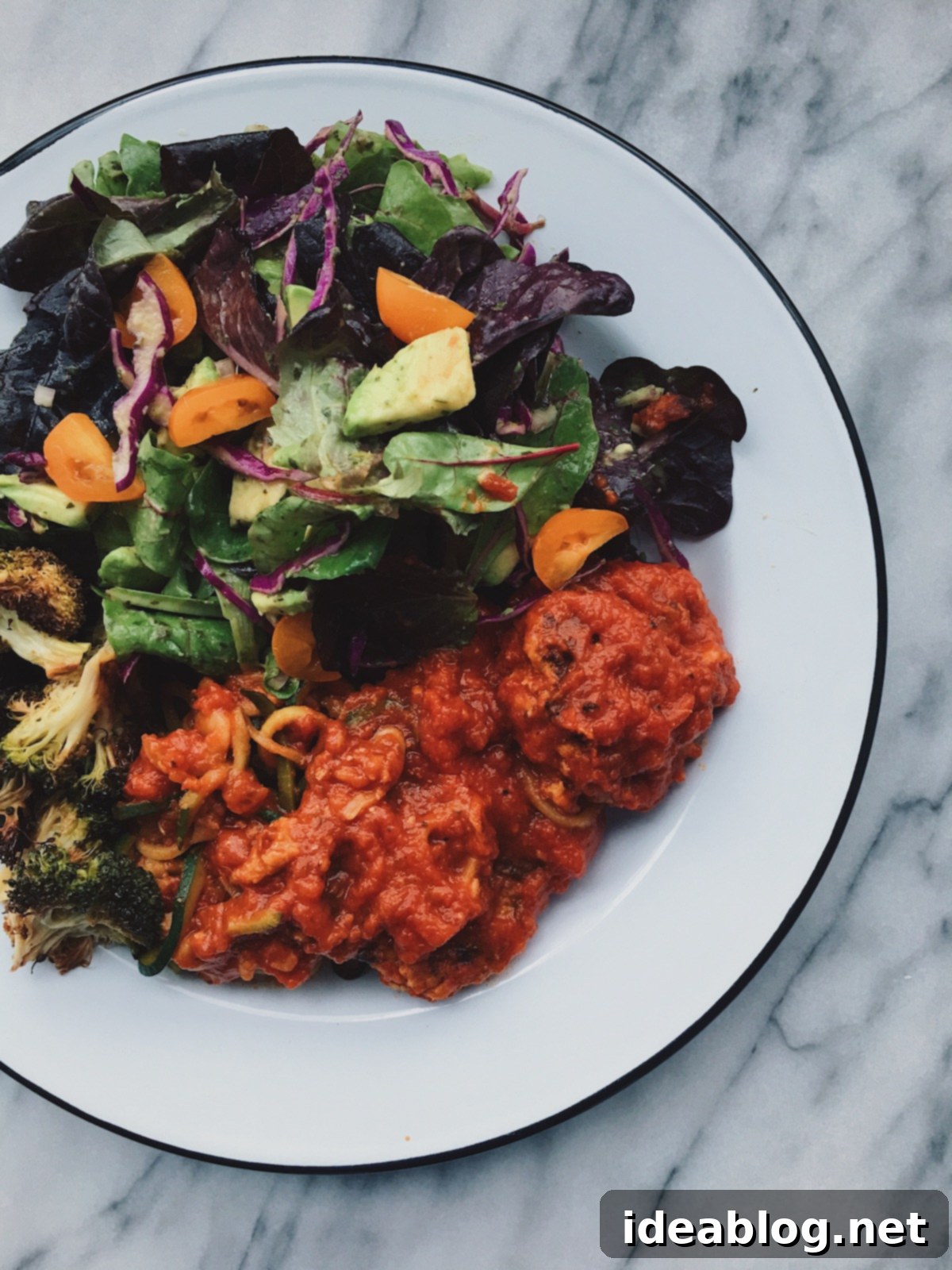
A Delicious Whole30 Meal: Leftover Meatballs, Zucchini Pasta, Salad, and Roasted Vegetables
Whole30 Guidelines: A Clear Roadmap to Clean Eating
To provide clarity for those considering the program or simply curious about its structure, here’s a concise overview of the Whole30 dietary guidelines, detailing what’s off-limits and what’s wholeheartedly encouraged:
Foods Excluded from Whole30:
- Grains: This extensive category includes all forms of wheat, oats, corn, rice, quinoa, barley, millet, bulgur, and any products made from them (e.g., pasta, bread, tortillas, corn chips).
- Legumes: All beans (black, pinto, kidney, cannellini, etc.), peas, lentils, and peanuts (which are botanically legumes, not tree nuts), along with peanut butter.
- Soy: Tofu, tempeh, edamame, miso, and all soy-derived products like soy sauce or soy lecithin.
- Sugar: All added sugars, whether artificial or natural. This means no refined sugar, cane sugar, brown sugar, maple syrup, honey, agave nectar, coconut sugar, date syrup, stevia, or artificial sweeteners (Splenda, Equal, Sweet’N Low). The goal is to break the sugar craving cycle.
- Dairy: Milk, cheese, yogurt, kefir, and cream from all animal sources. The only exception is ghee (clarified butter), which has its milk solids removed, making it dairy-free by Whole30 standards.
- Alcohol: Any form of alcohol, including beer, wine, and spirits.
- Processed Additives: MSG, carrageenan, sulfites, and other common food additives that can interfere with gut health and overall well-being.
Foods Allowed and Encouraged on Whole30:
- Vegetables: All varieties, from leafy greens to root vegetables, including starchy options like potatoes and sweet potatoes. Aim for a colorful array to maximize nutrient intake.
- Fruits: All fresh and frozen fruits in moderation, serving as a natural source of sweetness and vitamins.
- Seafood: Fish and shellfish of all kinds, providing essential omega-3 fatty acids and lean protein.
- Eggs: A versatile and staple protein source for any meal of the day.
- Meat & Poultry: Beef, pork, lamb, chicken, turkey, and other lean meats. The program strongly emphasizes seeking out high-quality, grass-fed, and pasture-raised options where possible for optimal nutrition.
- Healthy Fats: Olive oil, coconut oil, avocado oil, ghee, avocados, olives, and nuts (except peanuts). These are crucial for satiety and nutrient absorption.
- Tree Nuts & Seeds: Almonds, cashews, walnuts, pecans, sunflower seeds, pumpkin seeds (in moderation). These offer healthy fats and protein, but portion control is advised.
Pros and Cons: A Balanced Perspective on My Whole30 Experience
Every dietary approach has its advantages and disadvantages, and Whole30 is no exception. Here’s what I’ve observed in my initial days on the program:
Things I Appreciate About the Whole30 Program:
- Clarity and Simplicity: The rules are remarkably clear, making it easy to understand what’s allowed and what’s not. This precision reduces ambiguity and the mental stress often associated with trying new diets.
- Boosts Culinary Creativity: It forces you out of your culinary comfort zone. You inevitably find yourself exploring new vegetables, fruits, cuts of meat, and seafood to prevent meal boredom. This dramatically expands your cooking repertoire and makes you a more versatile chef.
- Enhanced Food Awareness: As an avid label reader, I thought I was already conscious of ingredients. Whole30 takes this to another level, revealing just how many hidden sugars and undesirable additives are in everyday pantry staples, even in items you wouldn’t expect.
- Mandatory Meal Planning: For those who struggle with organization, Whole30 makes meal planning and food preparation non-negotiable. This discipline is key to success on the program and forms a valuable habit for life beyond the 30 days, promoting sustained healthy eating.
- Focus on Nutrient Density: The emphasis on whole, unprocessed foods naturally leads to a diet rich in vitamins, minerals, and fiber, contributing to overall well-being.
Things I Find Challenging About the Program:
- Reliance on Meat/Seafood: Achieving satiety often requires significant portions of meat or seafood. While my body seems to respond well to increased protein, I typically don’t consume this much, and it highlights the program’s limited sustainable, plant-based protein options (given the exclusion of legumes and grains). However, it’s an important learning experience for just 30 days!
- Breakfast Limitations: Without grains or dairy, traditional breakfast options are severely restricted. While I appreciate savory breakfasts, the repetition of eggs can quickly lead to “egg fatigue.” I particularly miss yogurt for its convenience, versatility, and probiotic benefits. I anticipate this challenge growing over the next few weeks as variety becomes even more crucial.
- Social and Dining Out Difficulties: Navigating social gatherings or eating at restaurants becomes incredibly challenging. The stringent rules often mean I can’t truly enjoy meals with others or trust restaurant preparation methods. My upcoming trip to New York City is already proving to be a logistical puzzle, reinforcing the need for extensive planning or simply opting to cook at home to stay compliant.
- Mental Aspect of Restriction: While the ultimate goal is food freedom and a healthier relationship with food, the initial phase can feel restrictive. It requires a strong mental commitment to overcome cravings, adhere strictly to the rules, and avoid the temptation of old habits.
How I’m Feeling: My Day 4 Snapshot and Anticipated Changes
Overall, I’m feeling surprisingly good! I haven’t experienced any drastic, overwhelming changes, but subtle positive shifts are becoming apparent. I feel consistently satiated after every meal, eliminating my usual need for snacks between lunch and dinner – a rare occurrence for me. Snacking is generally discouraged on Whole30, and I’ve found I simply don’t need it. I’m also finding myself going to bed earlier, experiencing less bloating, and waking up with a healthy appetite, which I consider a positive sign of improved digestion and metabolic function. Crucially, I haven’t suffered from any afternoon slumps or episodes of “hangry-ness,” which is a welcome relief from my previous energy dips.
Interestingly, I haven’t encountered the intense sugar cravings that many people report during the initial three to five days of Whole30. This might be because I’ve always leaned towards savory foods over sweet ones. My approach to managing cravings is quite simple: “out of sight, out of mind.” If I have tempting items like banana bread or cake on my countertop, I’m undeniably going to eat them. But if these types of foods aren’t present in my kitchen – which is my preference for maintaining healthy habits – I can easily go for extended periods without them. This strategy has proven effective in keeping sweet cravings at bay.
What I genuinely miss most are grains, particularly my sprouted bread, English muffins, and pasta. However, this longing is less about the taste itself and more about the variety and textural dimensions they add to meals. The most noticeable craving, if I can even call it that, is for dairy. I miss milk and cheese immensely, primarily for the flavor they contribute. My morning coffee, in particular, is just not the same without milk, and finding a truly satisfying substitute has proven to be an ongoing quest. While there are many non-dairy alternatives, none quite replicate the creamy richness of milk in coffee.
I can already tell that proactive meal planning and creative recipe development will be absolutely essential in the coming weeks to prevent food boredom – arguably the worst culinary adversary! Keeping meals fresh, exciting, and varied will be key to sustaining my commitment to the program.
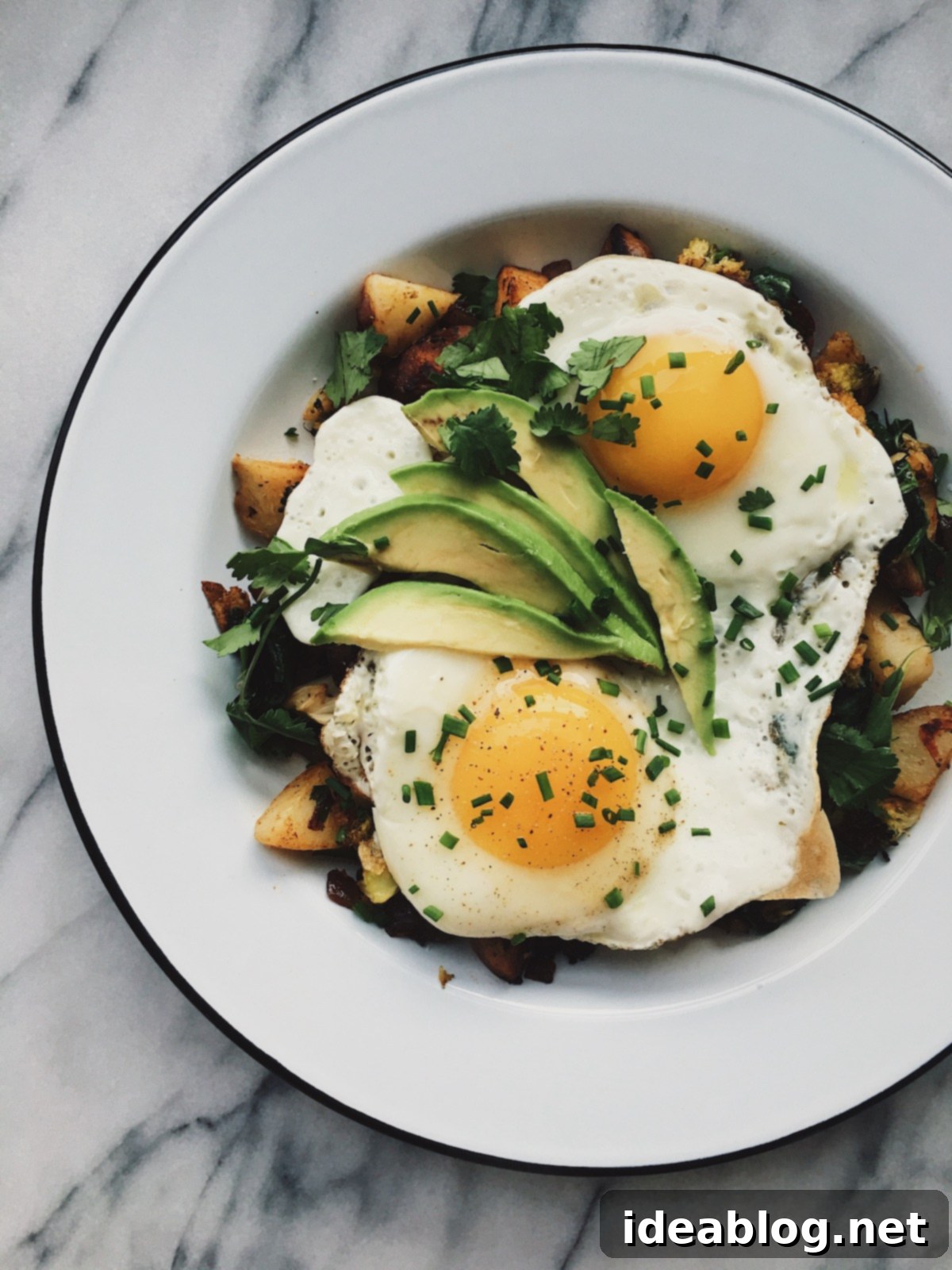
A Hearty Whole30 Breakfast: Hash, Avocado, and Fried Eggs
Your Whole30 Journey: Compliant Recipes and Essential Resources
For those of you who mentioned starting Whole30 with me, are contemplating it, or simply want to learn more about compliant cooking, I’m thrilled to share a selection of recipes from my blog that are already Whole30 compliant or can be easily adapted with a few minor tweaks. These recipes highlight that healthy eating doesn’t mean sacrificing flavor or excitement; it’s about discovering new ways to enjoy delicious, nourishing food.
For more behind-the-scenes glimpses into my Whole30 experience, including my ongoing search for the best non-dairy coffee creamer and daily meal inspiration, be sure to follow me on Instagram and check out my Instagram Story videos.
WHOLE30 COMPLIANT RECIPES + ESSENTIAL RESOURCES:
Cooking Resources: Building Your Whole30 Foundation
- Ghee vs. Clarified Butter: Understand the difference and learn how to make both at home! Ghee is your dairy-free fat hero, providing a rich, buttery flavor for cooking without any milk solids.
- Green Chile Adobo Sauce: A flavorful, versatile, and naturally compliant sauce that can elevate almost any Whole30 meal, from eggs to roasted vegetables and grilled meats. It’s a fantastic way to add a kick.
- Homemade Garlic Confit: Infused garlic oil and tender garlic cloves add incredible depth of flavor to your cooking without any non-compliant ingredients. Use the oil for dressings and the cloves for sautéing.
Wholesome Whole30 Breakfasts: Beyond Just Eggs
- Mexican Hash Brown Stack: A vibrant and satisfying breakfast or brunch option. Simply substitute the regular oil with liquid ghee to make it Whole30 approved, ensuring all other ingredients are compliant.
- Hearty Breakfast Hash: This recipe is easily adaptable. Omit any non-compliant oils, use ghee for cooking, and ensure your sausage choice is Whole30 compliant (no sugar, no nitrates/nitrites, etc.).
Nourishing Soups + Stews: Comfort in a Bowl
- Creamy Roasted Cauliflower Soup: A velvety, comforting soup that’s naturally compliant and incredibly flavorful. It’s a wonderful way to enjoy vegetables.
- Fragrant Garam Masala Carrot Soup: This naturally vegan recipe is perfect for Whole30, offering warm spices and a rich, earthy flavor profile that’s both comforting and exotic.
- Butternut Squash and Leek Soup: Easily made Whole30 by substituting butter with ghee and omitting the crème fraîche, retaining its comforting essence and smooth texture.
- Refreshing Creamy Tomato and Avocado Gazpacho: A light, vibrant, and naturally Whole30-compliant cold soup, perfect for a refreshing lunch on warmer days.
- Authentic Mexican Tortilla Soup: Enjoy the rich, savory flavors of this soup by simply omitting the cheese and tortilla chips. Add extra avocado for creaminess and healthy fats!
- Hearty Roasted Acorn Squash and Sweet Potato Soup: A naturally sweet and savory soup that provides warmth and sustenance, ideal for cooler days and a great way to enjoy seasonal produce.
- Slow Cooker Winter Vegetable Soup: Transform this into a Whole30 delight by omitting the lentils and cheese, then adding compliant chicken or homemade mini meatballs for a boost of protein.
Vibrant Salads: Fresh and Flavorful Whole30 Options
- Zesty Guacamole Greens Salad: A robust and satisfying salad packed with healthy fats and fresh flavors. Just remember to omit the tortilla chips for full compliance.
- Radicchio, Pear, Pomegranate, and Walnut Salad: This elegant salad becomes Whole30-friendly by omitting the gorgonzola cheese and adding some delicious roasted chicken or grilled shrimp for protein.
Delicious Main Courses: Centerpieces for Your Whole30 Meals
- Za’atar Grilled Chicken Bowls: A fantastic flavor profile that’s easy to adapt. Omit the bulgur and serve this succulent chicken over cauliflower rice or a bed of fresh salad greens.
- Seared Salmon with Adobo Sauce and Frisee Salad: A light, protein-packed meal that is naturally Whole30 compliant and bursting with vibrant, savory flavor from the adobo sauce.
- Middle Eastern Spatchcocked Chicken with Roasted Vegetables: A show-stopping, flavorful chicken dish that serves as a perfect compliant main course alongside a medley of perfectly roasted veggies.
- Spicy Sausage with Broccoli Rabe: Easily adapted by omitting the pasta and serving this flavorful mixture over vegetable noodles (like zucchini or sweet potato noodles) for a hearty, compliant meal.
- Weeknight Broiled Salmon with Chermoula Herb Crust: A quick, healthy, and incredibly delicious salmon recipe that fits perfectly into your Whole30 meal plan, offering exotic flavors.
- Indian Braised Chicken: For a Whole30 version, omit the chickpeas and yogurt, substituting with full-fat coconut milk to maintain creaminess and authentic Indian flavor.
- Elegant Trout Almondine: Achieve Whole30 compliance by omitting the flour for dredging and substituting butter with ghee for that rich, nutty flavor, making it a sophisticated choice.
Concluding Thoughts: Your Invitation to Wellness and Food Freedom
My Whole30 journey is just beginning, and I’m eager to continue exploring new culinary horizons and observing the ongoing changes in my body and mind. This program is more than just a diet; it’s an opportunity for deep self-discovery regarding food, habits, and overall well-being. It’s about building a sustainable foundation for healthier eating that extends far beyond the initial 30 days. I truly hope you found this initial update interesting and informative, offering valuable insights into what the Whole30 experience entails.
Please let me know in the comments if you’d like me to share more about my experiences, challenges, and successes as I progress through the rest of the program. Your engagement and questions help fuel this journey, and I’m excited to continue sharing the adventure of striving for food freedom with you all!
